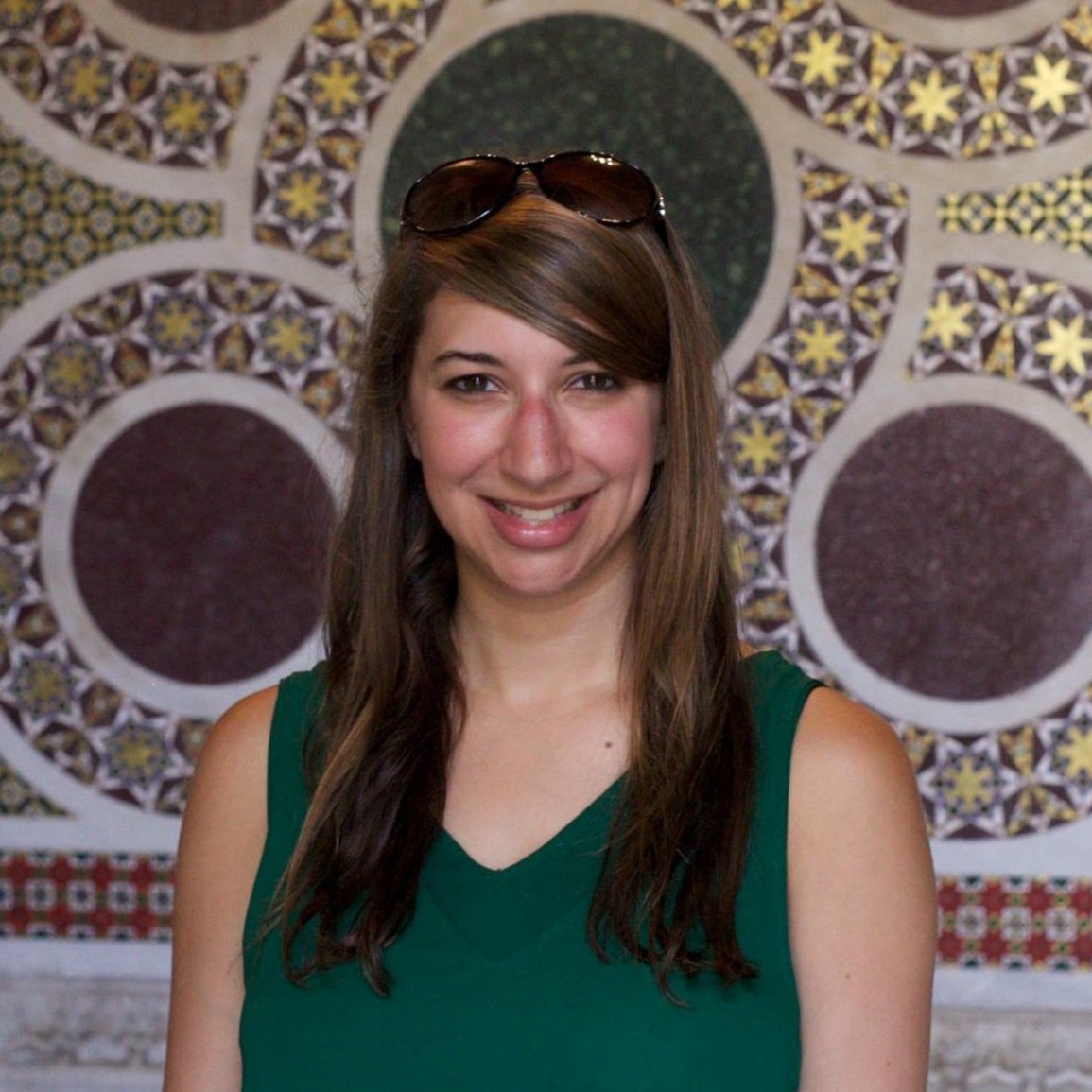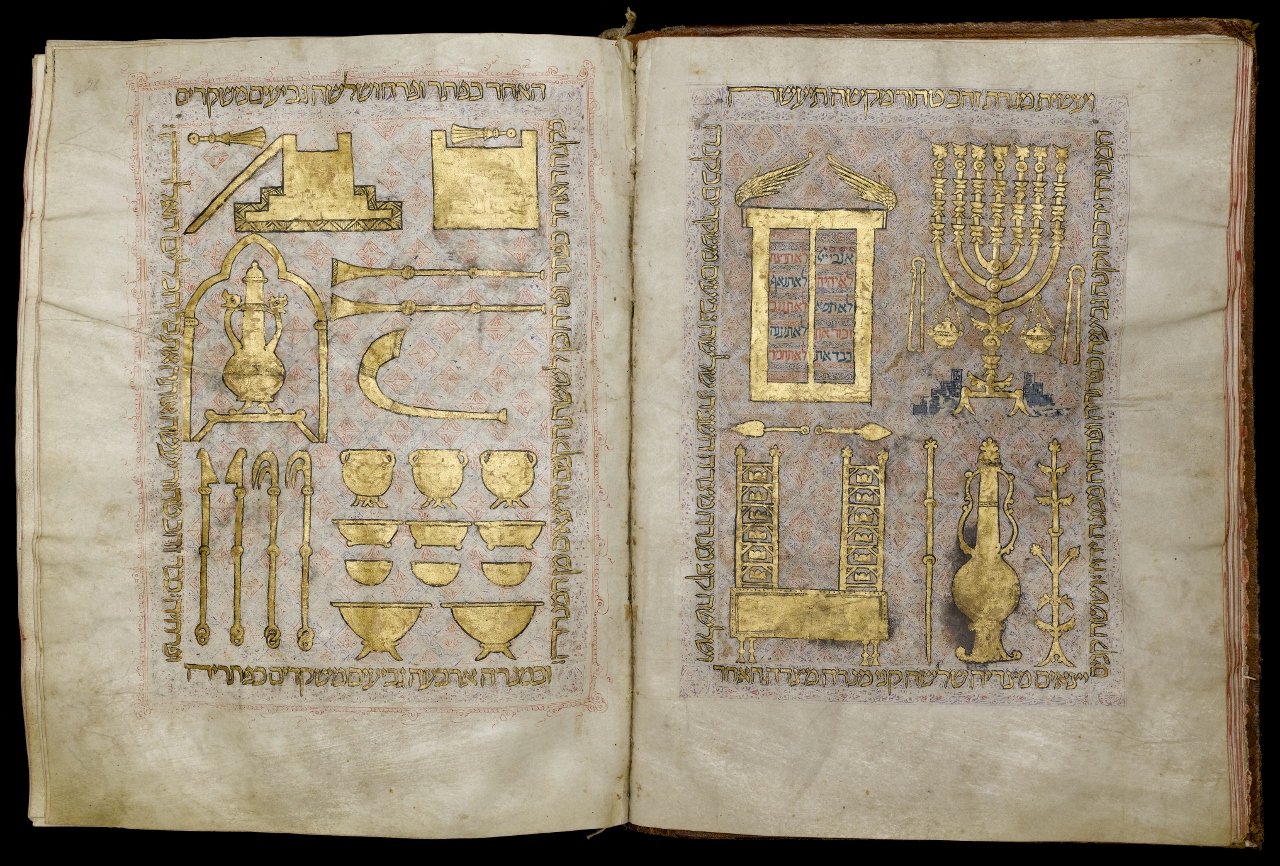Building the Mishkan in Medieval Catalonia


Hebrew Bible, Catalonia, first quarter of the 14th century (view in high-definition)
Tempera, gold and ink on parchment
Jay and Jeannie Schottenstein Collection, Columbus
Like a contract between artist and patron, Parashat Terumah details God’s commission of the construction of the Tabernacle—a task ultimately carried out by Bezalel, “who was filled with the spirit of God, in wisdom, in understanding, and in knowledge of all manner of workmanship” (Exod. 31:2-3). A combination of God’s commandment and Bezalel’s artistic vision, the Tabernacle exemplifies divine creation through human mediation.
Well after the destruction of the Temple, both the form of the monument itself and its fusion of law and art were perpetuated in thirteenth- and fourteenth-century Catalan Hebrew Bibles. Surviving in more than twenty large-scale illuminated manuscripts, these works often include a double frontispiece brilliantly depicting an array of golden ritual vessels, the very implements outlined in this week and next week’s parashiyot.
In addition to their beauty, the representations of the Temple appurtenances are also deeply rooted in scholarship, adhering not only to biblical descriptions, but also indicating knowledge of contemporaneous Jewish texts, including the writings of Maimonides and Rashi. For example, the steps at the base of the menorah in the illuminations, though not referenced in the biblical description, are discussed in Maimonides’s Mishneh Torah.
While this emphasis on the accuracy of representation was derived in part from the medieval Jewish community’s hopes of rebuilding the Temple, the balance of halakhah and artistic creativity once again emphasize that creation is both a celestial and terrestrial enterprise. This is especially evident in the Bible above, recently on view at the Metropolitan Museum of Art; framing the shimmering gilt vessels are the very biblical passages from Terumah that command their creation. This doubling of text and image, representing God’s verbal injunction alongside its visual manifestation, encapsulates the collaboration of God and humanity in the process of creation.



